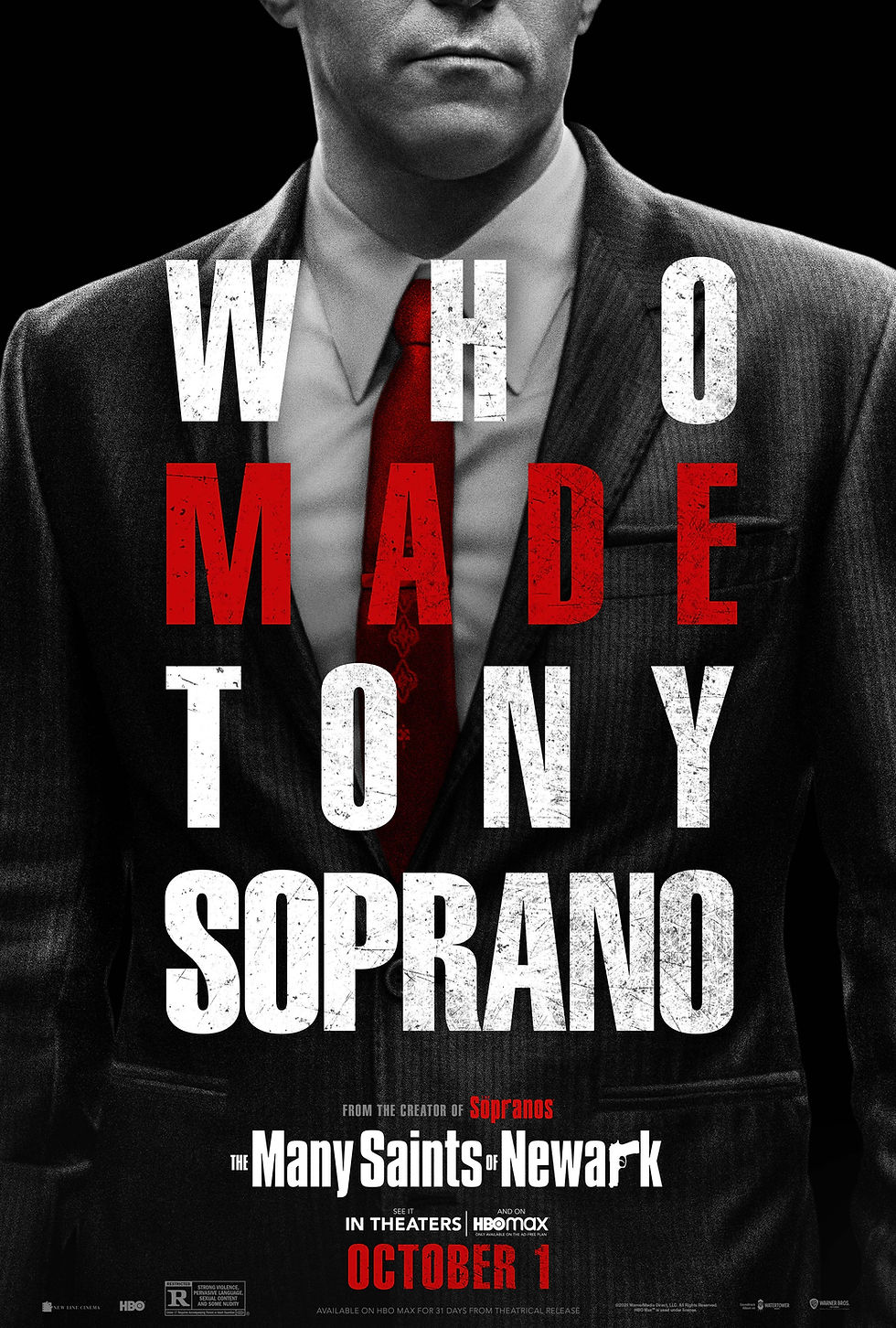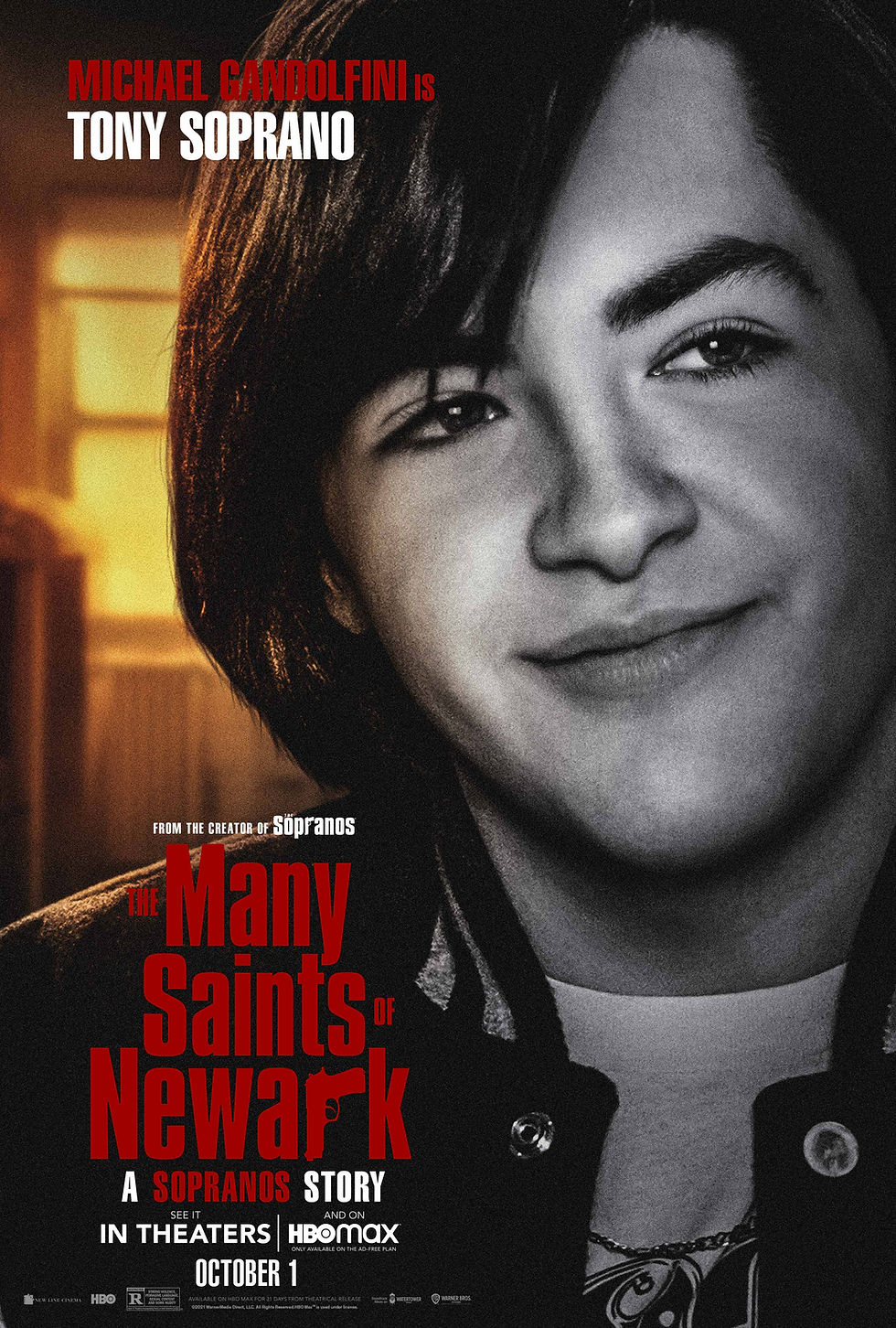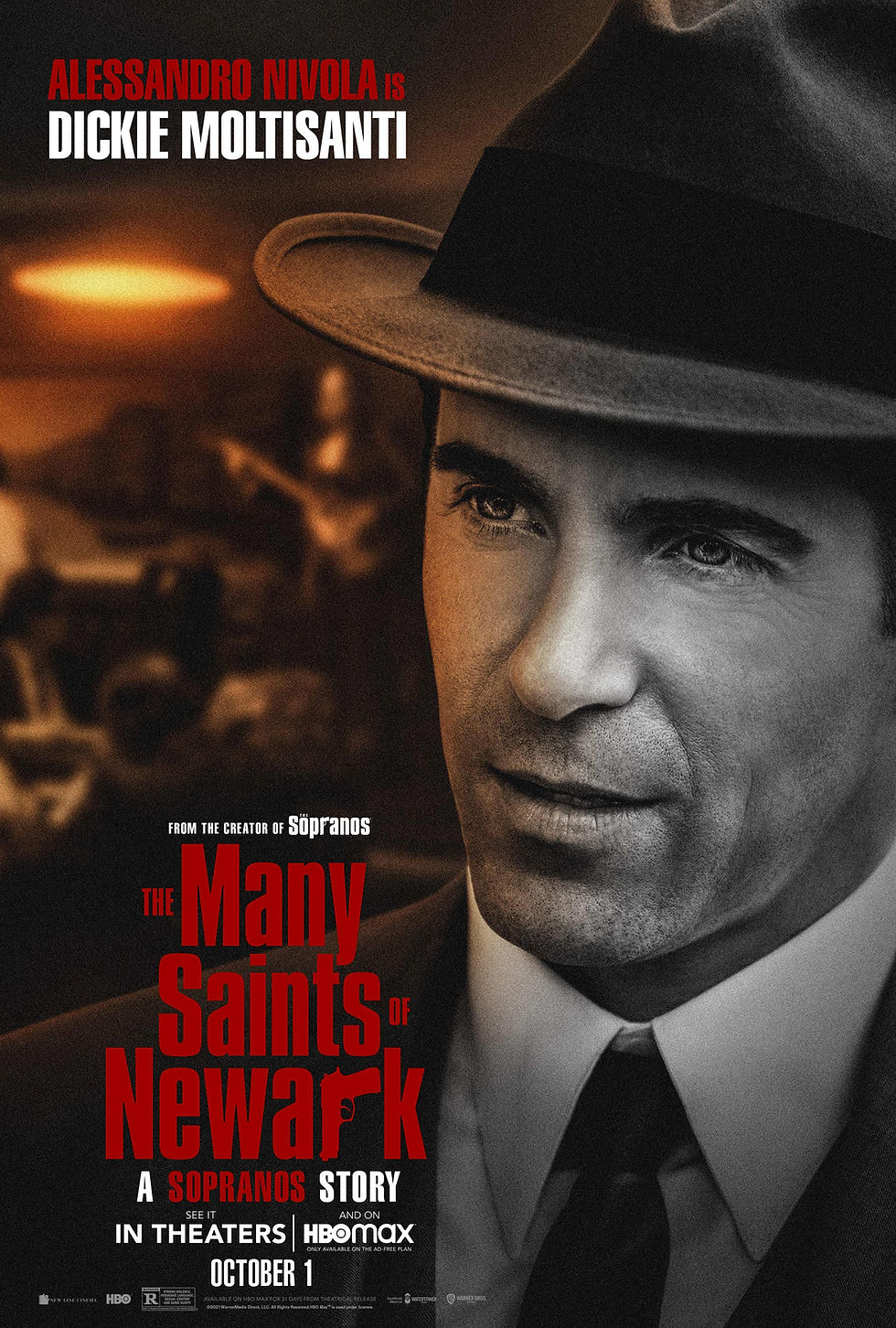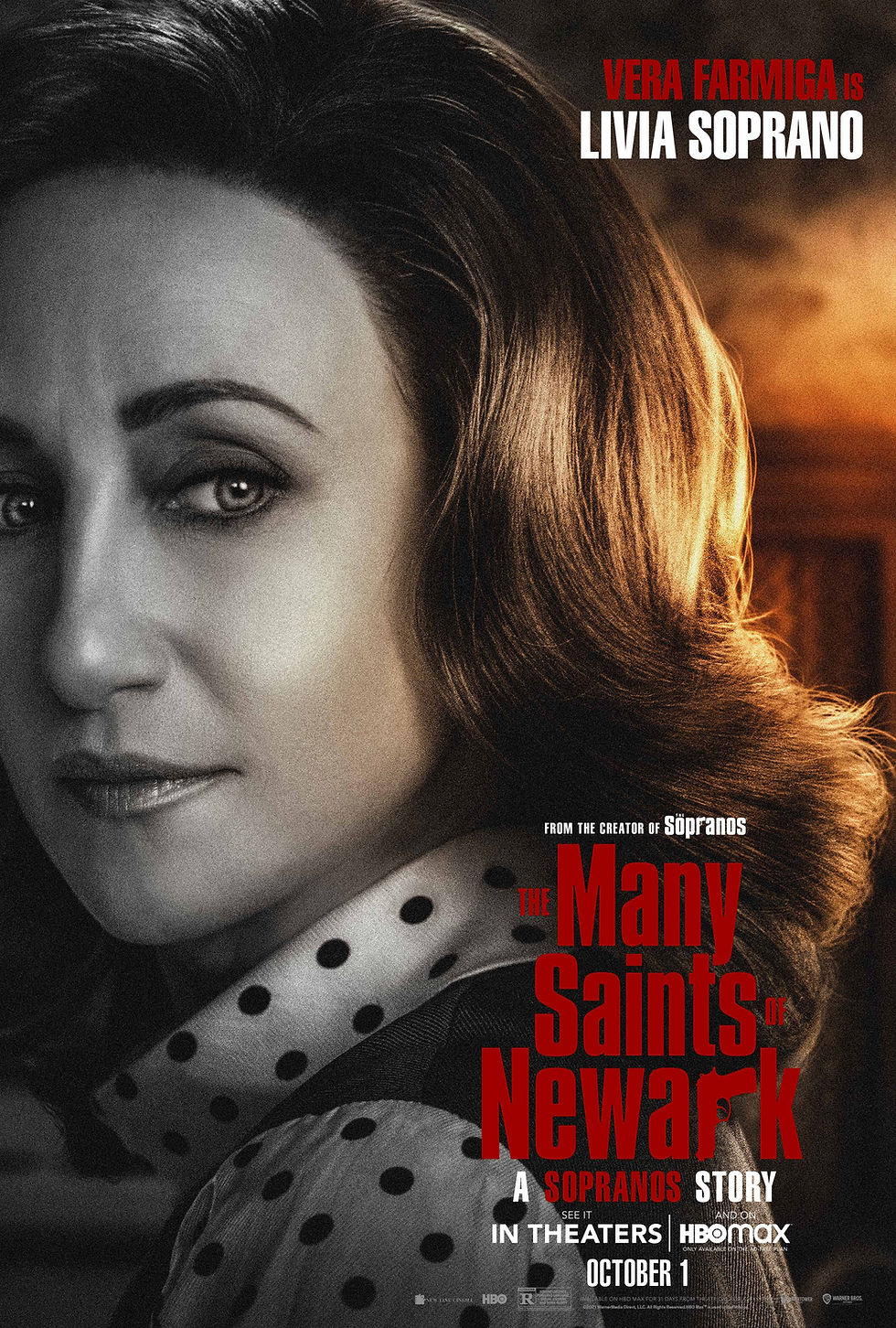Review: 'The Many Saints of Newark'
- Drew Moniot

- Sep 26, 2021
- 4 min read

The gangster genre has a long history in the movies dating back to ground-breaking classics
Like The Public Enemy (1931), Little Caesar (1931) and Scarface (1932).
The undisputed heavyweight of organized crime movies is Francis Ford Coppola with his timeless Godfather trilogy. It’s the gold standard.
The heir to his throne is Martin Scorsese with his definitive list of mob movies including Goodfellas (1990), Casino (1995) and The Departed (2006). With the exception of Coppola, you could argue that “nobody does it better.”
But mobster movie fans sat up and took notice with the spectacularly successful HBO series The Sopranos (1999 - 2007).
It had all the requisite blood and gore with one additional touch. It drilled deep into the psyche of its main character, Tony Soprano (James Gandolfini) whose regular, soul-searching visits with his shrink (Lorraine Bracco) became a staple of the show.
The series oozed quality for the outset and ended on one of the most shocking endings in the history of television. People still talk about it. To its credit, some still wonder just what the hell happened.
James Gandolfini’s untimely death of a heart attack at the age of 51, while vacationing in Italy in 2013 put an end to any hopes of a Sopranos spin-off, prequel or flashback movie. It was unthinkable that anyone else could step in and play the role.
But The Sopranos creator David Chase managed to resurrect the series despite the odds, and do what seemed impossible, namely, to do the prequel that established the characters and set The Sopranos epic story in motion.
The stroke of genius was to go back in time to the days when Tony Soprano was just a young, adolescent punk growing up in the turbulent streets of Newark in the days when police brutality and racial tension had hit the boiling point, resulting in rioting, looting and arson.
It was a story element that was never a part of the HBO series. Connecting with it made the prequel movie The Many Saints of Newark socially and politically relevant in a way that the series never was, despite its brilliance.
What this story had going for it was backstory—the tantalizing tale of how all The Sopranos characters came to be. What they were before we met them in the TV series. How their lives and fates were forged in their early, formative years.
Key to the telling of this story was the casting of the young Tony Soprano. I can recall seeing the first trailer for the movie and almost falling out of my seat when I first set eyes on the young actor playing the young Tony. The resemblance was uncanny.

I wondered how hard they had to search to find this actor only to learn that he was James Gandolfini’s son, Michael Gandolfini. It was a stroke of genius in the world of casting.
He not only looked the part, he played the part as well. To perfection. It was evident in the movie trailer. The Many Saints of Newark looked like it had everything going for it. I was in.
In my estimation, fans will not be disappointed. This is a project that seems to be the result of a long gestation period in which the goal was to get it right on every level and add another chapter to this cherished crime saga.
The opening scenes are reminiscent of classic film noire. I’m speaking of Sunset Boulevard (1950) in which the movie opens with the narration of a murder victim floating in a swimming pool.
In an earlier version of Sunset Boulevard, the movie was supposed to begin in a morgue as the camera dollied past toe tags and we heard the voices of the departed. When test audiences laughed at the sequence, it was scrapped in favor of the now-famous one.
The Many Saints of Newark opens in a graveyard, with the camera dollying past tombstones as we hear the voices of the people buried. One of them is someone sent to his grave by Tony Sporano himself. And thus, the story begins. And no one in the audience is laughing.
It’s a movie with a powerful beginning and a clever ending, an open ended one that leaves the door open for another spin-off prequel or two.
Fans will love the introduction to all the characters they loved in the series. The only disappointment is that a few of the major characters from the series are seen only briefly here.
There is only so much time you can devote to each of them in a two-hour movie, which made me wonder if The Many Saints of Newark should have been a multi-part or possibly multi-season project like The Sopranos. There seemed to be enough story to spread around.

Another stroke of writing genius was the decision to make “Dickie” Moltisanti the main character of the movie. He was only mentioned in the TV series, in passing. But he was an influential role model in Tony Soprano’s early development. The angle was tantalizingly ripe for development.
For those wondering about Tony’s complicated, and psychologically damaging relationship with his mother, we have plenty of backstory with Vera Farmiga as a young Livia Soprano.

Like all great mob movies, this one has all the drama, violence and gore that define the genre. It is brutal at times. Service station torque guns make such terrifying torture devices.
It all adds up to a pretty satisfying gangster movie. As in all the gangster movies, the moral here is that crime and corruption can provide power and hedonistic pleasure, but only for a while.
In the end, those who succumb to temptation must pay for their sins. And it’s never pretty.
The Many Saints of Newark opens in theaters and on HBO Max October 1.






Comments